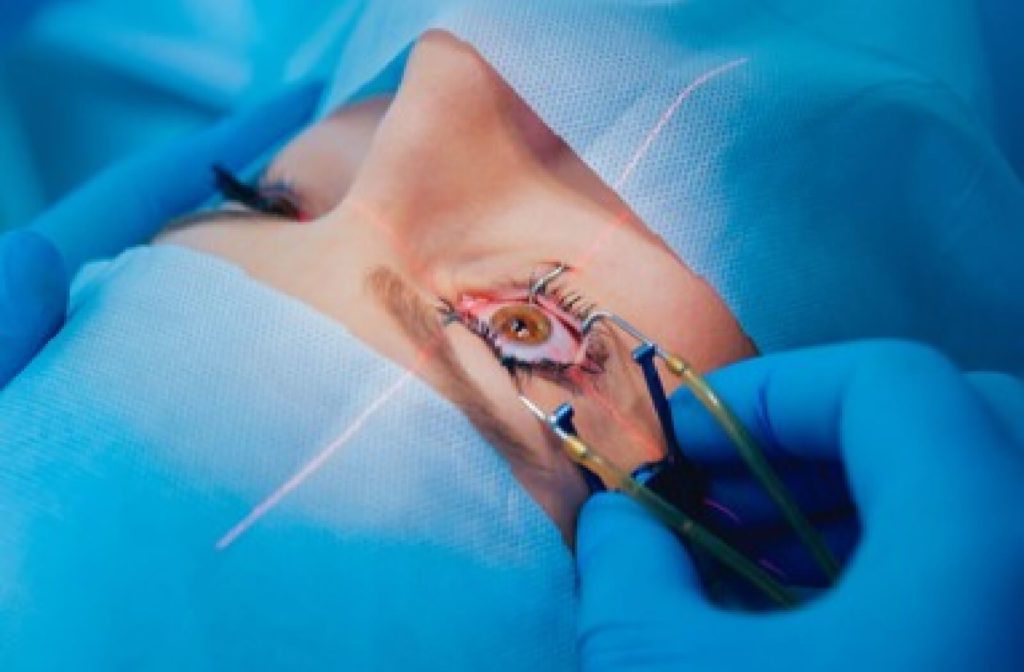If you and your family have recently been in for your yearly eye exams, and your child was diagnosed with myopia, you probably have a lot of questions. If you’ve taken to the internet looking for answers, you may even have more questions than you started with!
One of the biggest questions you may have is if your child’s myopia can be reversed. While there is currently no way to reverse myopia, there are many ways to manage it.
Managing myopia early on can slow its progression, making it easier to control as your child grows up.
What Is Myopia?
Myopia is a refractive error that causes close-up objects to be clearly visible while distant objects are out of focus. Nearsightedness, as it’s commonly known, affects 30% of the Canadian population.
When an eye grows too long, or the cornea becomes too steep, the eye loses its ability to focus light directly on the retina and becomes nearsighted. Instead, light strikes before the retina, making distant objects appear blurry or out of focus.
Nearsightedness generally presents itself during childhood and adolescence, and it becomes more stable by age 20.
Symptoms of myopia can include:
- Blurry or hazy vision when looking at faraway objects
- Squinting to read
- Frequent headaches
- Poor vision in low light
What Causes Myopia?
Children’s eyes change quickly. Babies’ eyes are short, and their vision is poor when they are born. However, as children grow, their eyes lengthen.
Your child’s eyes should stop elongating, and their vision should be clear at all distances. However, if their eyes continue to grow long from front to back, they can become nearsighted. Myopia often runs in families, so if a child’s parents have myopia, they’re more likely to develop it as well.
How to Manage Myopia
Because myopia is caused by the shape of your eye and cornea rather than a virus or infection, it can’t be “cured” with medicine, exercises, massage, or herbal remedies.
That isn’t to say there’s nothing you can do to improve your vision. Glasses and contact lenses can correct nearsightedness as long as they are worn as recommended by your optometrist.
Laser eye surgery is a long-term corrective treatment suitable for adults that permanently alters the shape of your corneas, changing the way you focus. Another option for adults and children to consider is orthokeratology.
Glasses for Myopia Management
MiYOSMART lenses use defocus incorporated multiple segments (D.I.M.S.) technology. D.I.M.S has a clear central zone that corrects the child’s myopia so that they can see clearly in school, sports, and while watching TV.
To control myopia progression, MiYOSMART lenses include multiple defocus segments that are evenly spaced around the clear central zone. As a result, the MiYOSMART lens provides clear vision and myopic defocus at all viewing distances, prompting the eye to slow its growth.
Contacts for Myopia Management
MiSight 1 day soft contacts are meant for children aged 8–12. This daily-disposable soft contact lens’ dual-focus optical design provides your child with clear vision while also signalling the eye to slow down in its growth.
When compared to single-vision lenses, MiSight slowed myopia progression by 59% when used for 3 years.
Orthokeratology
As a myopia treatment, many optometrists recommend orthokeratology, also known as ortho-k. A series of hard contact lenses are worn to reshape the eye, gently flattening the cornea to reduce myopia symptoms.
Your child can insert the rigid contact lenses before bed, and wear them while they sleep.
Wearing ortho-k lenses only improves vision temporarily. When the lenses are removed for the day, the cornea gradually returns to its original shape, resulting in the return of myopia symptoms. Regardless, ortho-k may provide some long-term myopia progression reduction.
Over a 12-year period, overnight orthokeratology was successful in slowing the progression of myopia.

Laser Eye Surgery
If you’re reading this as an adult with myopia, a corrective option for you may include laser eye surgery since myopia stabilizes by around 20 years old.
Laser surgery for nearsightedness alters the shape of the cornea with a laser. The goal is for you to be able to see clearly without glasses or contact lenses or to rely on them less. 2 main types of laser eye surgery include:
- LASIK: LASIK involves a surgeon creating a flap to access your corneal tissue, and using a focused laser to shape your cornea by removing small amounts of tissue.
- PRK: PRK surgery, like LASIK, uses a laser to reshape the cornea. One significant difference is that the top layer of corneal tissue is permanently removed in PRK.
Book an Appointment with Your Optometrist
Taking care of your family’s vision includes regular eye exams and a good eye care routine.If your child has myopia, make an appointment with the Discover Eyecare team to see if myopia management is right for them. The age, maturity level, and lifestyle of your child will all play a role in determining which treatment to provide and when to begin myopia management.



